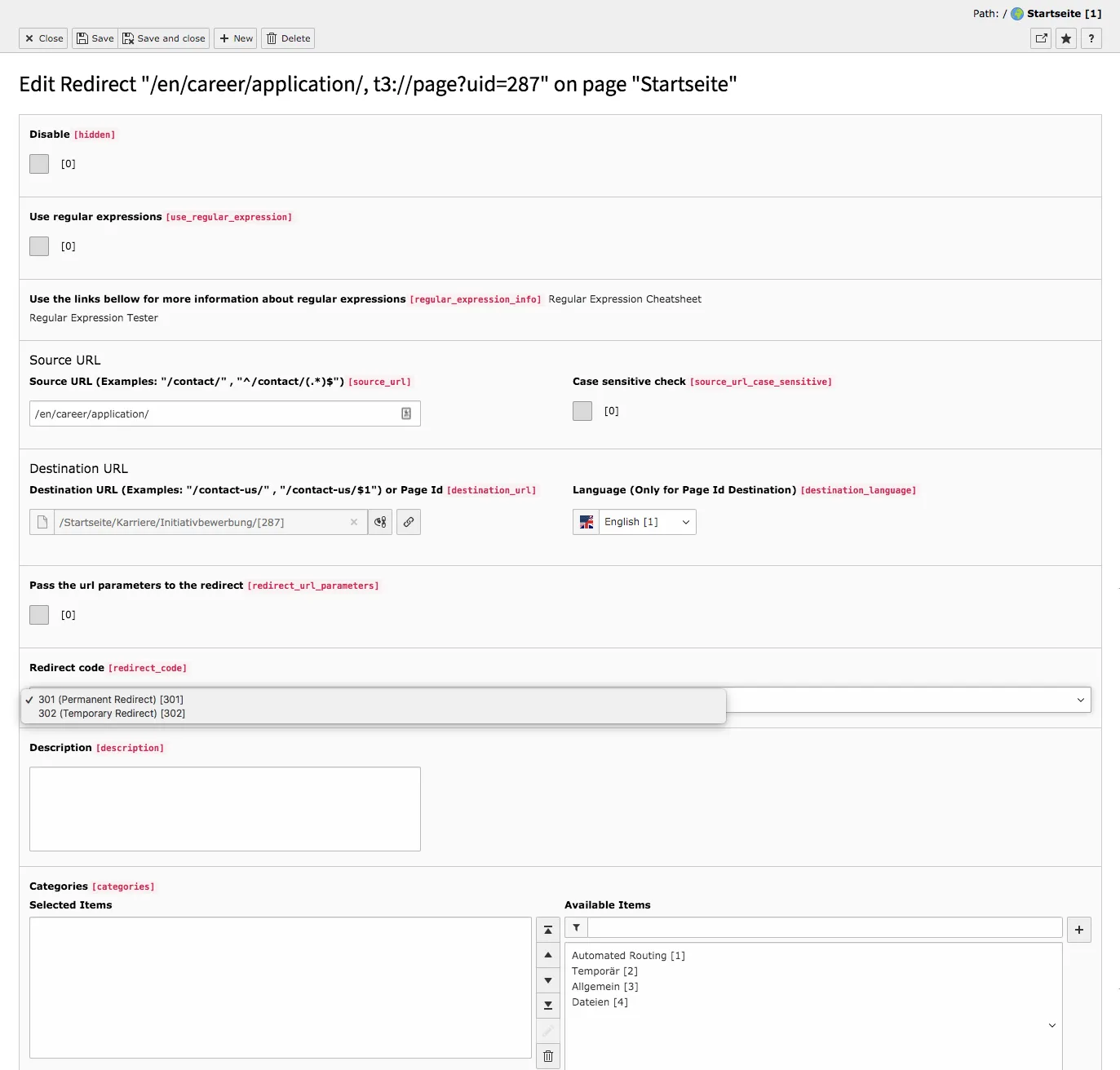
This module automatically generates redirects, but they can also be created manually. Information is available for each route: You can see when it was created and how often and when a redirect was last used.
Redirects are important for search engine ranking. If the URL of a page changes, the search engine crawler knows with a redirect where the page can be found instead. But also for users or for links with old URL, it is unfavorable, if an address does not work anymore. With a redirect you make sure that everyone gets to the desired content.
The module redirects or sg_routes was developed by us and is still maintained and serviced by us. SEO Redirects for TYPO3 is a powerful tool that covers functions that TYPO3 itself does not provide. Our Website-Base includes the module by default – but you can also purchase it for independent TYPO3 instances. In the technical documentation you will find important information on how to use the extension. Convince yourself of the numerous features on the product page and feel free to visit us in the sgalinski shop.
The first steps
This note is related to the logging of the calls. To prevent the table in the database from becoming too large, a task must be created that regularly cleans up the table and deletes old data, as large amounts of data can be generated. As long as this task has not been created, you will see the note to remind you to create the task. However, this is done quickly and easily.
For the task to serve its purpose, you must make the following settings:
- Activate the checkbox under Disable.
- In the drop-down menu under Class, select Table garbage collection.
- Select under Type single.
- Under Table to clean up, select tx_sgroutes_domain_model_routehit.
- Save the task.
If you go to the Redirects module now, no note will be displayed and the database will be cleaned up periodically.
In the list of redirects you can see when a redirect was created, when it was last called and how often the redirect was called. The number of hits can be reset to zero with the lightning bolt icon. The hit count can be useful to keep track of the redirects usage. For instance, routes that are not being called can be deleted. Furthermore, the options Edit record, Hide record and Delete record are available for each redirect. More options can be opened by clicking on the three dots: Display information, Display change history/Un-do.
Add and edit redirects
When you change the URL of a page in the page properties, automated redirects to the new URL are created. However, it is just as easy to create redirects yourself.
To add a new redirect, click the Create new Redirect button. You will now be taken to the forwarding settings. Enter the Source URL and the Destination URL. If the redirect is temporary, set the redirect code 307 (Temporary Redirect) or 302 (Found). For permanent redirects, enter the code 308 or 301.
You can categorize the redirects by clicking the desired category in the Available Items list. A redirect can also have multiple categories. To remove a category, click on it in the Selected Items list and then click on the Recycle Bin icon. The category is then back in the list of available items. Save the changes. All settings of a redirect can be edited at any time.
You can create a new category using the New category button in the redirect management or directly in the properties of a redirect by clicking the + icon.
Would you like to know more?
All information about the available editions can be found on the webpage for our TYPO3 Website-Base. You have the possibility to get a Website at a Fixed Price or you decide for a Website as a Service package, with which no further costs for hosting or security and function updates will come up to you.

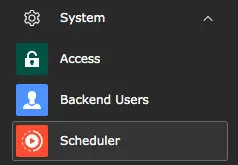
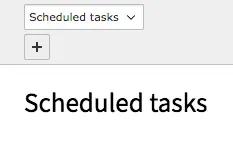

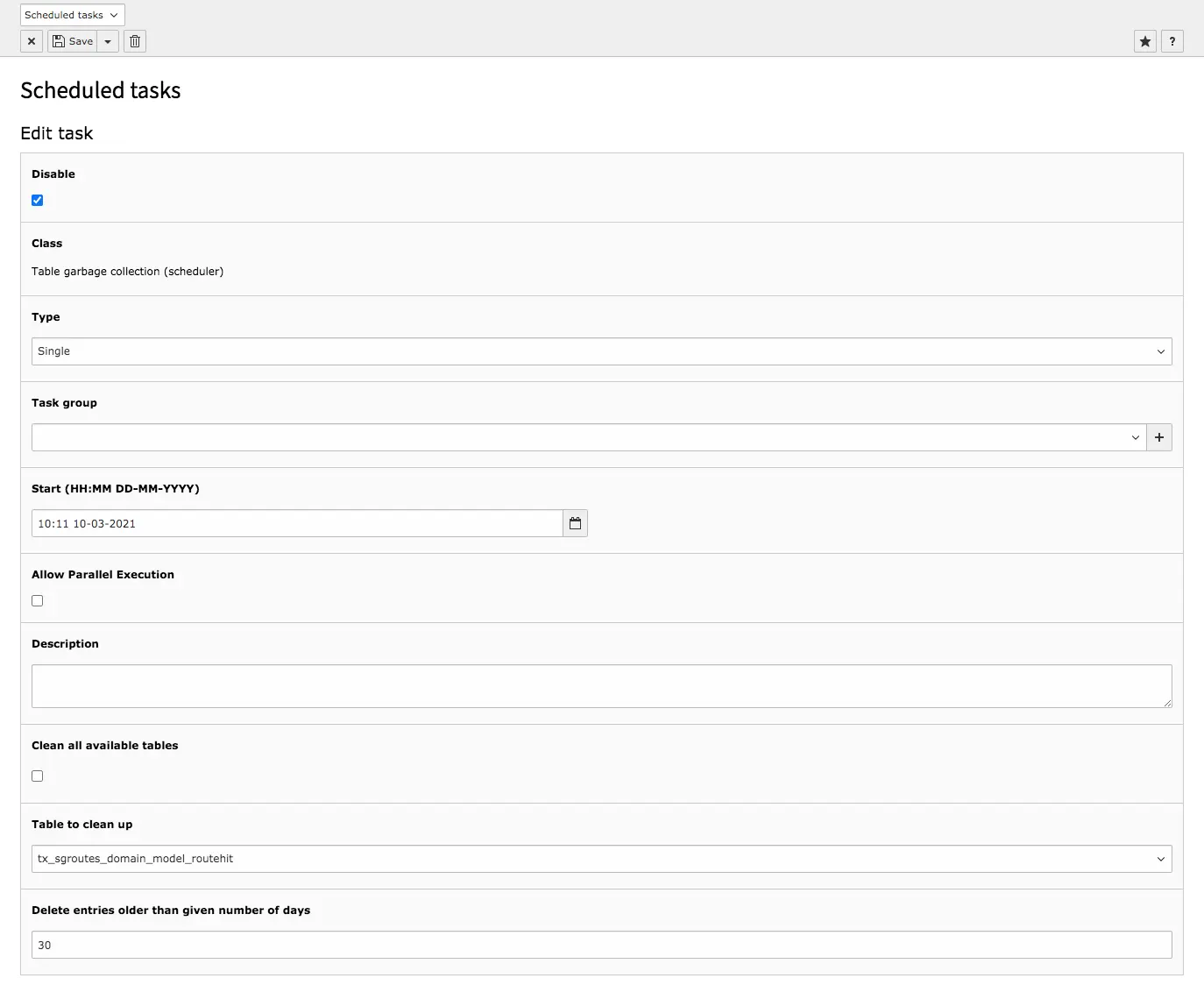
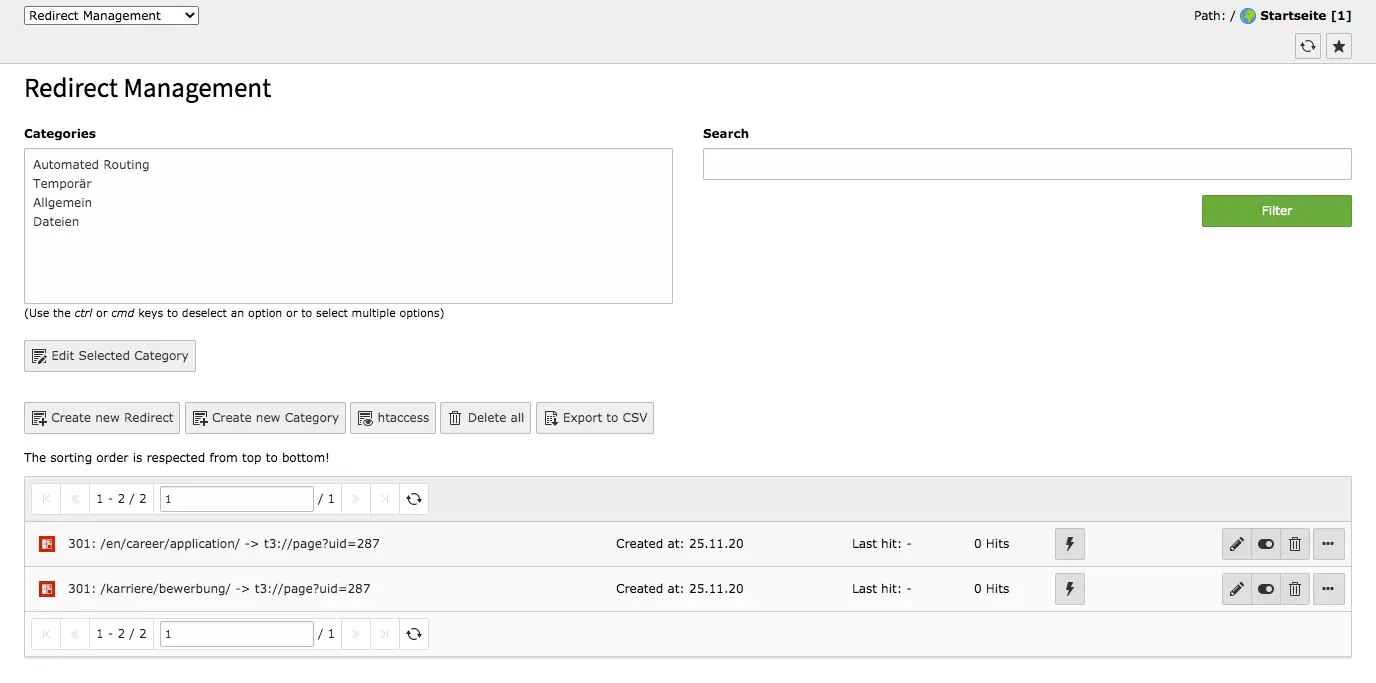
![[Translate to English:] Weiterleitungen Weitere Optionen TYPO3 Modul Weiterleitungen Optionen und weitere Optionen](/fileadmin/_processed_/a/b/csm_weiterleitungen_weitere_optionen_63747ed22e.webp)
